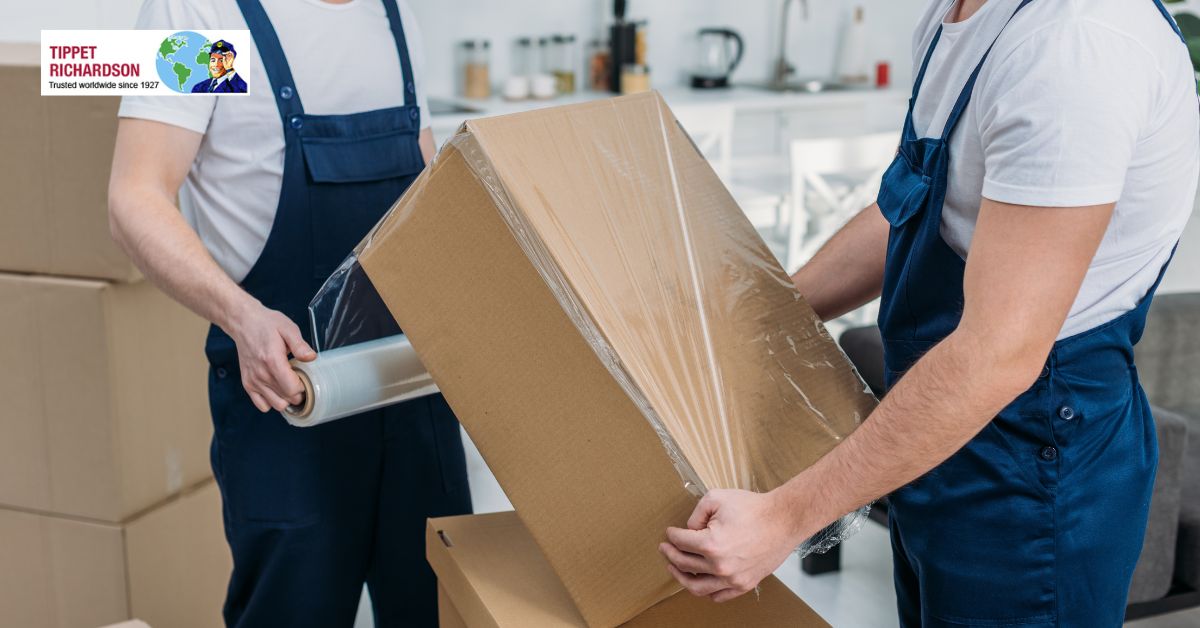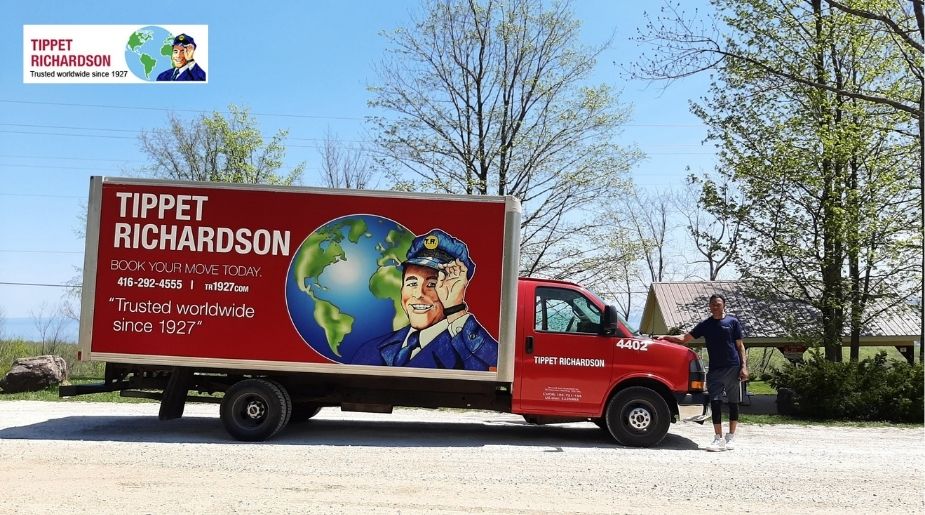Moving overseas presents a unique set of challenges, and at the heart of a smooth international relocation lies secure international packing. Properly packing your belongings is not simply about placing items in boxes; it is a critical step that safeguards your possessions throughout the long journey ahead. Whether shipping delicate keepsakes or valuable electronics, ensuring everything arrives intact requires meticulous attention to how each piece is wrapped, cushioned, and boxed.
When it comes to international moving services, secure packing takes on even greater importance. Fragile item shipping demands specialized care—vibrations, temperature shifts, and rough handling during transit can seriously damage improperly packed goods. Moreover, the complexity of customs regulations worldwide means that packing must also align with strict customs-safe packing standards. Failure to meet these requirements can result in shipment delays, additional fees, or even confiscation of items, posing added stress during an already demanding time.
Ultimately, understanding secure international packing is your first crucial step in a successful global move. It ensures your valued possessions are protected against the rigours of transport and reach their destination without complications. As you prepare for your relocation, keep these considerations in mind so that packing becomes a strategic process rather than a last-minute scramble. Next, we’ll dive into the essential materials and tools that form the foundation of secure international packing, empowering you to protect even the most fragile and valuable items with confidence.
Essential Materials and Tools for Secure International Packing
Choosing the right materials and tools is a cornerstone of secure international packing. The success of shipping fragile and valuable items heavily depends on how well they are cushioned, supported, and protected from environmental and handling risks during transit. Using inadequate or low-quality packing supplies can jeopardize not only the safety of your belongings but also the smooth processing of customs documents.
Selecting the Right Packing Supplies for Fragile and Valuable Items
When embarking on an international move, it’s important to invest in packing supplies specifically designed to shelter delicate goods. High-grade bubble wrap remains the go-to for cushioning glassware, ceramics, and electronics because of its shock absorption properties. Similarly, foam sheets or peanuts complement bubble wrap by filling voids inside boxes, preventing any unwanted shifting. For particularly fragile or valuable possessions, double-walled corrugated cardboard boxes provide extra structural strength to resist punctures or crushing forces.
Packing tape of premium quality and waterproof labels should also be part of your toolkit — a well-sealed box reduces exposure to moisture and prevents accidental openings. Specialized packaging like rigid boxes for artwork or wooden crates for oversized items ensure tailored protection. Investing in acid-free tissue paper or cloth wraps can prevent surface scratches for antiques and fine furniture.
Using Custom-Approved Materials for Customs-Safe Packing
International customs authorities impose strict regulations on the type of packaging materials allowed. For instance, organic substances such as untreated wood or straw can harbor pests and are frequently prohibited or require certification. To streamline customs clearance, it’s crucial to use materials approved for international shipments. Tippet Richardson, serving clients across Toronto, prioritizes customs-safe packing by providing compliant materials that meet both the destination country’s and Canadian export standards.
Certified corrugated boxes, cellulose-based packing peanuts, and certain plastics approved for export help avoid delays or surcharges related to customs inspections. Additionally, careful consideration of labels and markings according to customs requirements protects your shipment from misclassification. Using custom-approved materials not only supports secure international packing but also facilitates smoother throughout the journey.
Tips for Organizing Packing Tools to Streamline the Process
Secure international packing benefits from thoughtful organisation before you begin. Grouping supplies by category—wrapping materials, tapes, markers, boxes—makes the packing process more efficient and reduces errors. Keeping fragile item shipping essentials close at hand prevents interruptions and allows you to maintain focus on protecting each belonging properly.
Creating a “packing station” in a well-lit, clean space helps maintain order and prevents damage caused by clutter or rushed handling. Using toolboxes or portable caddies to hold smaller items like scissors, box cutters, and sealing tape also expedites work. Label each box clearly from the outset, with indicators for fragility, orientation, and contents, to ease unpacking and customs processing alike.
By assembling the correct packing materials and organising them effectively, you lay a strong foundation for secure international packing. This preparation ensures your items, whether fragile keepsakes or valuable electronics, are wrapped and boxed with precision and compliance. Next, we will explore a step-by-step guide to packing fragile items securely, covering practical techniques that safeguard your goods for international shipping.
Step-by-Step Guide to Packing Fragile Items Securely for International Shipping
Packing fragile items for an international move requires a careful, methodical approach that combines attention to detail with proven techniques. This guide helps ensure your delicate belongings survive the rigours of transit intact, supporting secure international packing standards and easing customs-safe packing procedures.
Preparing Fragile Items for Transit: Cleaning and Inspecting
Before packing, take time to clean and inspect each fragile item thoroughly. Dust, dirt, and residues can compromise protective layers or cause damage over time. Use gentle cleaning methods appropriate for the object—soft cloths for glass or fine china, and specialized cleaners for electronics. Inspect for existing cracks, chips, or weak points, noting these to avoid further damage.
Address any loose parts by securing or removing them, such as unplugging and wrapping cables separately from electronics. This stage also helps you identify items requiring custom crates or additional padding for fragile item shipping. Taking these preparatory steps ensures that packing materials work effectively and your belongings have the best chance to arrive in perfect condition.
Wrapping Techniques: Bubble Wrap, Foam, and Other Padding Options
Proper wrapping is the heart of secure international packing. Start by layering bubble wrap generously around each fragile object. For smaller items, wrap several times to create a cushioning envelope, securing the wrap with tape. Larger pieces benefit from foam sheets or padded blankets for extra shock absorption, especially around edges and corners.
Avoid using newspaper as it can transfer ink and lacks sufficient protective qualities. Instead, fill empty space inside boxes with foam peanuts or inflatable cushions to prevent shifting during transit. For irregularly shaped items, custom foam inserts or molded packaging may be necessary to maintain a snug fit that absorbs vibration and pressure changes.
Proper Boxing and Labeling Strategies to Prevent Damage
Choosing the right boxes is critical. Use sturdy, double-walled corrugated boxes that can withstand stacking and handling stress. Place heavier items at the bottom and lighter, more fragile items on top, cushioning each layer thoroughly. Whenever possible, use custom-sized boxes to avoid excessive movement.
Label boxes clearly with “Fragile,” “Handle with Care,” and orientation arrows to assist handlers in managing your shipment correctly. Incorporate a detailed inventory sheet inside the box for easy identification, which also assists in customs inspections. Consistent labelling supports seamless customs-safe packing and reduces chances of mishandling during fragile item shipping.
Special Considerations for Electronics, Glassware, and Artwork
Certain categories of fragile belongings require tailored packing strategies. Electronics should be packed in their original boxes when available; otherwise, ensure they are wrapped in anti-static bubble wrap and cushioned with foam. Remove batteries to prevent leaks during transit.
Glassware demands individual wrapping and separation using dividers or customized compartments inside boxes. Tile and plate sets get best protection when stacked vertically, like records, to lower breakage risk.
Artwork often needs professional-grade crates combining foam padding, acid-free paper, and climate controls to defend against fluctuations in temperature and humidity. Tippet Richardson’s experienced team in Toronto can advise or provide packing solutions tailored precisely for high-value or fragile shipments.
By carefully preparing, wrapping, boxing, and labeling your fragile possessions, you elevate your secure international packing game and reduce the risk of damage during delicate overseas transit. Next, we’ll explore customs-safe packing in depth to ensure compliance and hassle-free clearance at borders.
Customs-Safe Packing: Navigating Regulations and Documentation
When preparing for an international move, understanding customs-safe packing is just as vital as protecting the physical integrity of your belongings. Adhering to customs regulations and providing accurate documentation helps avoid costly delays, unexpected fees, or even confiscation of shipments. Mastering this aspect ensures your secure international packing efforts translate into a smooth customs experience.
Understanding Customs Requirements and Restrictions
Every country enforces its own set of customs rules governing what can enter its borders, how items must be packed, and the documentation required for clearance. Prohibited or restricted goods can include perishables, hazardous materials, plants, and certain medications. Some countries require certification for wooden packing materials to prevent pest contamination. It’s essential to become familiar with the regulations of both the export country—in this case, Canada—and the destination country.
Properly prepared shipments use packing materials that comply with international standards. For example, Tippet Richardson, serving clients across Toronto and beyond, utilizes ISPM 15-approved wooden crates and pest-free packaging supplies to meet these stringent requirements. This foresight reduces the risk of customs inspections holding up your belongings.
How to Declare Items Correctly and Avoid Delays
Complete and accurate declarations on customs forms are fundamental. Each item should be listed with precise descriptions, quantities, values, and harmonized tariff codes when applicable. Misdeclaration—whether intentional or accidental—can result in fines or confiscation.
Framing your inventory with clarity helps customs officials expedite the review process. When preparing for fragile item shipping, it’s especially important to distinguish delicate or high-value pieces within your documentation. Tippet Richardson provides expert advice on completing customs paperwork correctly and can assist in organizing an itemized, customs-compliant inventory.
Packaging Tips to Meet Customs Standards
Customs authorities look beyond documentation—they also evaluate the packaging itself. Using clean, approved packing materials free of contaminants demonstrates compliance. Boxes should be sturdy and securely sealed with durable tape. Labels must be clear, legible, and placed where customs inspectors can easily access them.
Avoid overpacking boxes, as excessive weight or bulging can signal weak packaging. Fragile item shipping demands extra care packing to prevent damage and subsequent customs headaches. Disclosing the contents and condition on the packaging surface, especially for fragile or restricted items, helps customs personnel handle goods appropriately.
Collaborating with Your International Movers for Smooth Customs Clearance
Partnering with experienced international movers like Tippet Richardson in Toronto significantly eases the customs process. These professionals stay up-to-date with evolving customs regulations and help coordinate the necessary documentation, packaging compliance, and communication with customs officials.
Their guidance ensures your secure international packing aligns precisely with customs requirements, minimising hold-ups or fines. Additionally, experienced movers coordinate such as obtaining permits, arranging inspections, and advising on country-specific rules that might affect your shipment.
By combining diligent packing, meticulous documentation, and expert mover collaboration, you can navigate customs confidently. This approach safeguards your belongings from both physical and regulatory risks, paving the way for a successful international relocation. Up next, we’ll share additional secure packing tips designed to further protect your possessions throughout the moving process.
Additional Secure Packing Tips to Protect Your Belongings
International moves are complex endeavours that demand more than just basic packing. Going the extra mile with certain techniques and careful planning can significantly elevate the success of your secure international packing efforts. These additional tips focus on enhancing protection, documenting your possessions thoroughly, and managing the timing of your packing activities to reduce risks.
Using Double Boxing and Reinforcements for Extra Protection
Double boxing is an effective method especially suited for fragile and high-value items. This involves placing a well-padded item in a smaller box and then placing that box inside a larger box with additional cushioning between the two. The extra layer absorbs shocks and prevents punctures or crushing from external forces during transit.
Reinforcing box seams with high-quality packing tape adds structural integrity, minimizing the likelihood of boxes bursting open under weight. Corner protectors and edge guards are further reinforcements that reduce damage from impacts and stacking pressure. Tippet Richardson’s team in Toronto expertly employs these techniques as part of their secure international packing services, offering clients peace of mind.
Tips for Packing Heavy and Oversized Items Safely
Heavy and oversized items present unique challenges. To secure these properly, use sturdy pallets or custom crates that evenly distribute weight and prevent tipping. Wrapping surfaces with protective blankets or foam padding shields them from scratches and dents.
Disassemble items like furniture when possible, bundling hardware in clearly labelled bags to avoid loss. For fragile components, ensure they’re packed separately and cushioned thoroughly. Using proper lifting tools and securing items firmly during loading and transport protects both the goods and the movers.
Creating an Inventory List and Taking Photos for Insurance Purposes
Maintaining a detailed inventory list of all packed belongings is a fundamental component of secure international packing. Each entry should describe the item, note its condition, and include any serial or model numbers. This list serves as a valuable reference for customs declarations and insurance claims if needed.
Complementing the list with clear photographs of each item before packing documents condition and verifies ownership. Taking pictures of wrapped or boxed items further supports your records. Tippet Richardson encourages clients to keep such documentation to streamline claims and resolve any disputes swiftly.
Timing Your Packing to Minimize Transit Risks
Starting your packing early allows you to work carefully without rushing, greatly reducing the chance of accidental damage. Avoid packing immediately before movers arrive; last-minute packing often leads to mistakes or use of inadequate materials.
Aim to complete fragile item shipping preparations well in advance so items can be inspected and adjusted if necessary. Coordinating timing with your international movers ensures that customs paperwork is ready and that your shipment aligns with scheduled departures, preventing unnecessary storage or handling delays.
By integrating these additional tips into your secure international packing plan, you enhance protection, organisation, and efficiency. This thoughtful preparation paired with Tippet Richardson’s reliable expertise in Toronto guarantees a safer journey for your valuables. Next, we will wrap up the key takeaways to help you approach your international move with confidence.
Read Also: Vehicle Shipping Internationally: What You Need to Know
Wrapping Up
Secure international packing is truly the foundation for a successful overseas move. It protects your treasured possessions from the rigours of long-distance transit while ensuring they comply with the regulatory demands of customs authorities. Without careful preparation, the risks of damage, delays, or unexpected fees rise significantly, adding stress to what should be an exciting new chapter.
Choosing a seasoned partner like Tippet Richardson in Toronto makes all the difference. Their expertise in fragile item shipping guarantees that each piece, whether delicate glassware or sensitive electronics, is handled with premium materials and proven packing methods. Their thorough understanding of customs-safe packing requirements simplifies the complex paperwork and regulatory hurdles, helping your shipment sail through inspections smoothly.
By following the comprehensive tips outlined—from selecting custom-approved supplies and expertly wrapping fragile goods to meticulous documentation and timing your packing—you put yourself ahead in managing your international move confidently. Every step contributes to safeguarding your belongings and streamlining processes.
As you embark on this journey, remember that secure international packing is not merely a task but a strategic investment in peace of mind. With Tippet Richardson by your side, you benefit from nearly a century of moving experience in Toronto, ensuring your overseas relocation is as seamless and worry-free as possible. Armed with these top tips, you’re well prepared to protect your possessions and focus on the exciting adventure ahead.





